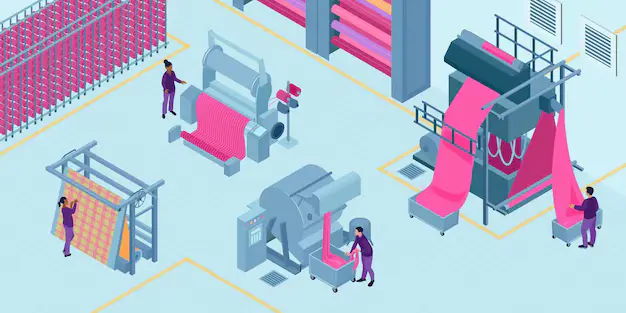
The global textile industry has recently witnessed a significant shift due to the industrial crisis in Bangladesh. One of Bangladesh’s largest conglomerates, Beximco, is set to shut down 170 of its textile factories, creating ripples in the global market. This development has inadvertently opened new doors for India’s textile hubs, allowing the nation to capitalize on the opportunity.
What Led to Bangladesh’s Textile Crisis?
Bangladesh has long been a leading exporter of garments and textiles, but recent economic and political instability has severely impacted the sector. Key factors contributing to this crisis include:
- Political Instability:
- The fall of the Sheikh Hasina government marked the beginning of heightened unrest in the textile industry.
- Frequent worker protests, especially in suburban industrial areas like Gazipur and Ashulia, have disrupted production.
- Financial Challenges:
- Beximco alone owes approximately 23,000 crore BDT to the nation’s banking system, of which 19,000 crore BDT are declared as bad loans.
- Overdue payments to workers have exacerbated tensions, leading to the shutdown of many factories.
- Global Competition:
- Rising costs and inefficiencies have made Bangladeshi textiles less competitive compared to other markets, including India.
Impact on Beximco
Beximco, headquartered in Dhaka, is not only a textile giant but also one of Bangladesh’s largest conglomerates by market capitalization. However, the company’s financial troubles have led to:
- Categorization of its companies:
- A Category: Profitable pharmaceutical companies.
- B Category: 32 companies slated for auction.
- C Category: 136 textile factories set to shut down within three months.
- Government intervention:
- Plans to take control of Beximco’s shares within weeks to manage the crisis.
This turmoil has left a void in the global supply chain, which India is ready to fill.
India’s Textile Hubs: Beneficiaries of the Shift
India, with its well-established textile hubs, is poised to gain from the decline in Bangladesh’s exports. Key regions benefiting include:
- Tiruppur, Tamil Nadu:
- Known as the “Knitwear Capital of India.”
- Reports indicate that factories are now operating at full capacity due to increased orders from international markets.
- Ludhiana, Punjab:
- Specializes in woolens and hosiery, with significant growth in exports.
- Surat, Gujarat:
- Renowned for synthetic textiles and sarees, witnessing a surge in demand.
- Noida, Uttar Pradesh:
- A booming hub for ready-made garments, attracting substantial investment.
- Jaipur, Rajasthan:
- Emerging as a key player in traditional textile exports.
Economic Gains for India
India’s textile industry is set to experience massive growth due to this shift. Major players like Arvind Mills, Vardhman Textiles, Raymond, and Reliance Industries are already reaping the benefits. Key developments include:
- Increased Orders:
- Companies like Raymond have reported a ₹200 crore boost since the start of the crisis.
- New Investments:
- Over ₹10,000 crore is being invested in Uttar Pradesh’s upcoming industrial parks.
- Reliance Industries has announced plans to establish a textile-focused industrial park.
- Projected Revenue:
- The crisis is expected to bring an additional $2-3 billion annually to India’s textile sector.
Global Implications
- Export Growth:
- Indian textiles are filling the void in markets like the EU and UK, thanks to competitive pricing and timely delivery.
- Trade Negotiations:
- This development could strengthen India’s position in ongoing trade talks with the EU and UK, especially regarding Free Trade Agreements (FTAs).
Conclusion
The shutdown of 170 textile factories in Bangladesh has disrupted its industrial landscape, but it has also paved the way for India to strengthen its foothold in the global textile market. With increased investments, heightened production, and growing international demand, India’s textile industry is on the cusp of a significant boom.
This crisis underscores the importance of political stability and financial prudence in sustaining industrial growth. For India, it is an opportunity to emerge as a global leader in textiles, turning challenges into remarkable economic advantages.
Also Read: India’s Export Surge: October 2024 Sets New Records, On Track to Reach $800 Billion
Disclaimer: The views expressed are based on current developments and industry trends. Readers are advised to conduct their own research or consult experts for deeper insights.
Follow US



